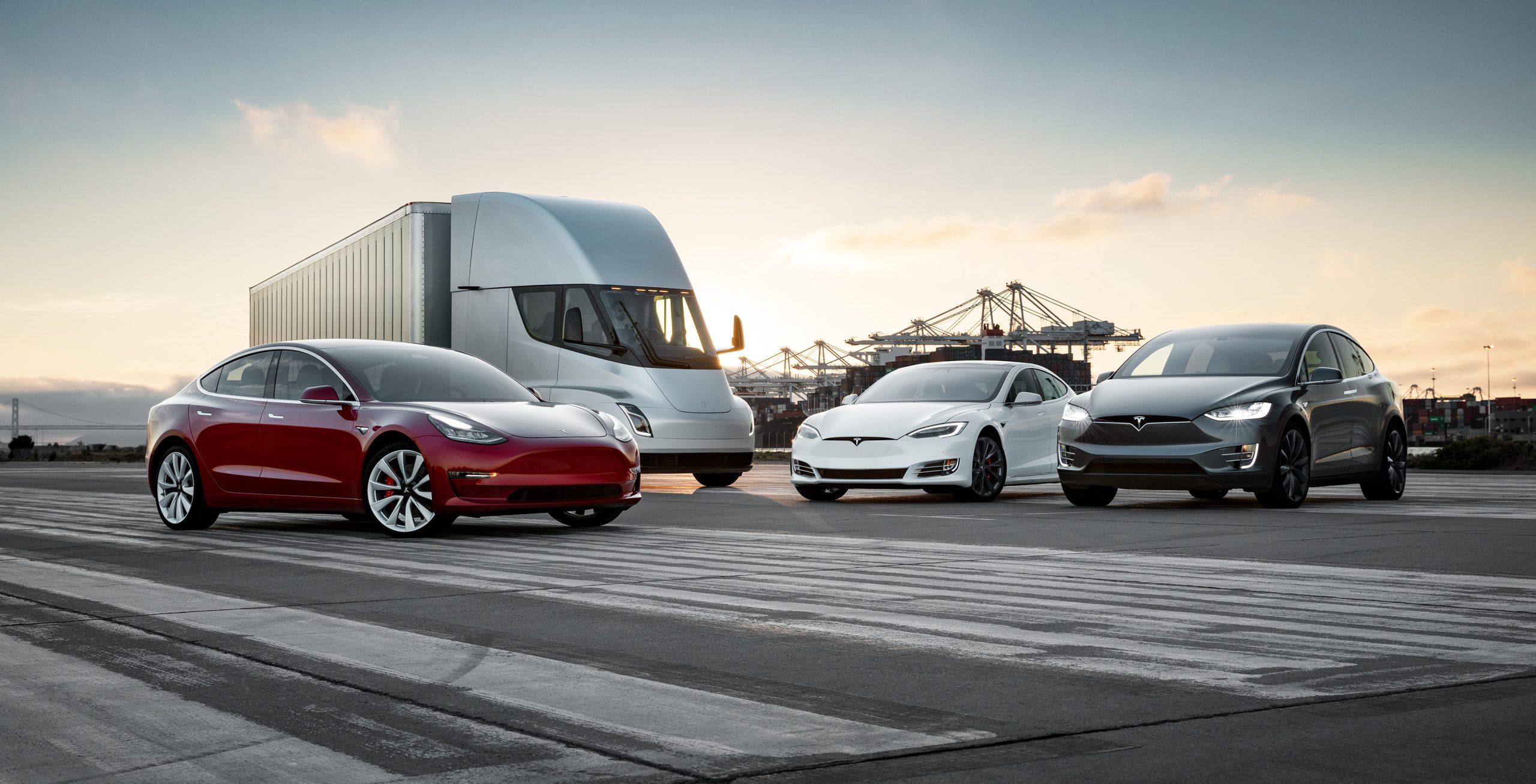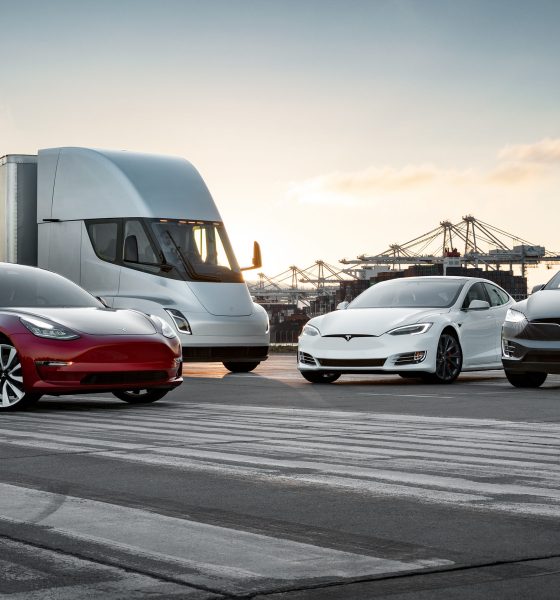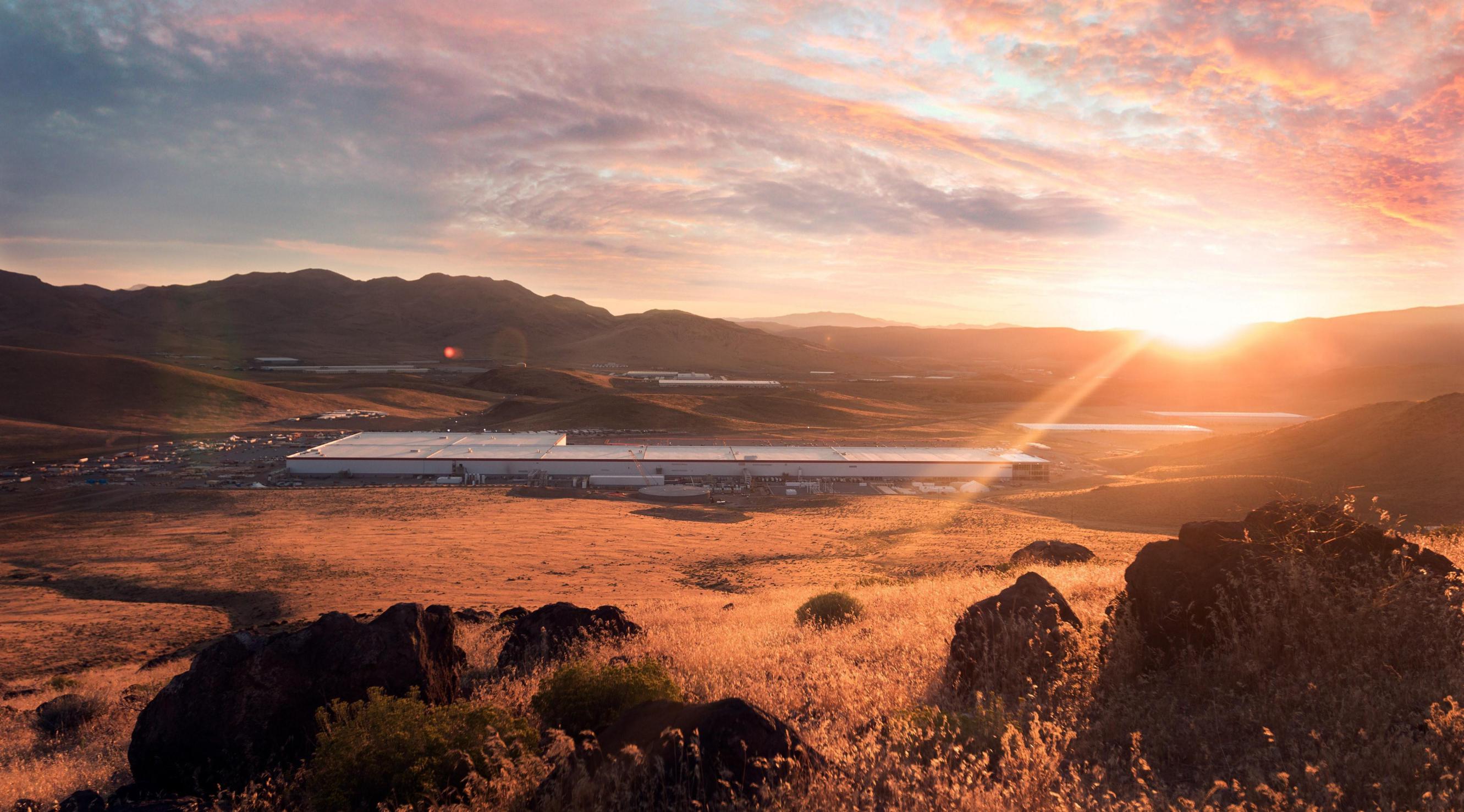

Investor's Corner
The ‘Tesla Effect’ is starting to extend from legacy carmakers to the oil industry
Back in February, self-made billionaire Don Gao from China mentioned that the “Tesla Effect” continues to grow even in markets beyond the California-based company’s reach. Gao, who owns Positec – a maker of power equipment – uses lithium-ion batteries for his company’s products, and they are steadily becoming a potent rival for heavyweight brands like Black & Decker. The billionaire entrepreneur noted that Tesla’s commitment to battery tech is spilling over into other industries, to the point where consumers’ perception of battery-powered devices is now changing.
“This Tesla Effect is a major trend and has really changed consumers’ perception of things that are battery driven and their capabilities,” he said.
Tesla did not come up with the electric car, nor did it come up with lithium-ion batteries. Both technologies were present even before the company was founded. That said, and partly thanks to the unraveling of Elon Musk’s first Master Plan, Tesla was able to capture an audience and a dedicated consumer base with its first vehicle – the Tesla Roadster. The small sports car was mostly a proof-of-concept, in the way that it was intended to show that electric cars need not be boring or limited in range. The car was successful enough that Tesla was able to follow it up with the Model S, a vehicle designed from the ground up to be a high-performance, long-range electric car. The rest is history.
Tesla’s electric cars were able to capture the interest of car buyers, even those that are particular about power and performance. It should be noted that Tesla’s electric cars were showing strong sales even before the company rolled out features like Autopilot. The company’s electric vehicles, from the Model S, to the Model X, to the Model 3, were desirable simply because they were excellent cars. They just happen to be powered by electricity instead of gas.

Since Tesla is still in the process of growing, its electric cars have been competing in the luxury segment. The electric vehicles themselves are not traditional luxury cars, with their minimalistic and almost spartan interiors, but they do provide a premium experience through their deep integration of software and hardware. Over the years, Tesla’s electric cars sold well, until such time that they started outselling mainstays from legacy carmakers like BMW and Mercedes-Benz. The Tesla Model 3, the company’s first attempt at a mass-market car, was recently listed as the 4th best-selling passenger car in the US, beating out competitors from the luxury midsize segment like the Mercedes-Benz C-Class.
In the same way that companies unrelated to Tesla are starting to explore the potential of lithium-ion batteries partly due to the electric car maker, a number of legacy automakers have accelerated their transition to electrified transport as well. Among the German carmakers, several have expressed their intent to come up with their own premium electric vehicles. Mercedes-Benz has the EQ program, Volkswagen just announced that it is investing ~$7 billion into e-mobility, and Porsche has the Taycan, a high-performance electric car that’s set to meet the Model S head-on in the premium EV market. Most of these carmakers would likely not acknowledge it, but there is little doubt that the transition to electrified transport was expedited by the efforts of a small electric car startup from Silicon Valley.
In a way, the Tesla Effect is happening at the perfect time. Several regions in the world are shifting towards cleaner forms of transportation. China plans to eventually ban diesel and gasoline-powered cars in its major cities. France and Britain have both committed to banning gas-powered automobiles in the future as well. Earlier this month, the EU Parliament voted for a 20% cut in CO2 emissions from new cars and vans in 2025 and a 40% reduction in 2030, accelerating the region’s transition towards cleaner transport. To effectively support the transition, carmakers, from startups like Tesla to pedigreed veterans like Mercedes-Benz, have to ramp their efforts at creating even more compelling, cost-effective electric vehicles.

In a recent segment on CNBC, Paul Sankey of Mizuho Securities mentioned that the “Tesla Effect” is starting to make its way to the oil industry as well. Last Thursday, oil prices tumbled as much as 4% amidst concerns about the fallout from the United States’ sanctions on Iran, the OPEC’s third-biggest crude oil producer. Wall St. analysts noted that oil could be in striking distance of $100 per barrel – an adjustment that would be felt by owners of fossil fuel-powered cars. The Mizuho analyst noted that part of the reasons behind the struggles of the oil industry is the shifting perception towards oil itself.
“Essentially, the big issue is the so-called “Tesla Effect,” the general “End of the Oil Age” theme that is a problem for these (oil) stocks. As the oil price goes up, especially to the levels we’re at now and potentially beyond, it’s almost as if the Tesla Effect could be exacerbated by the potential for higher oil prices to accelerate the end of the Oil Age. The Tesla Effect is the overall concept that (while) the 20th century was driven by oil, the 21st century will be driven by electricity. There’s a 30-year transition, and we’re somewhere probably 10 years into that transition. Ultimately, (the) terminal value of oil has been severely affected by the potential for us to change behavior,” the analyst said.
What is quite remarkable is that Tesla is nowhere close to reaching the company’s overall goals. Elon Musk once noted that Tesla would not stop until all cars in the road are electric. And the truth is, even if the company reaches its production targets for the Model 3 and the Model Y and its future Truck and compact sedan, Tesla would not be able to transition the auto industry towards electrification on its own. What Tesla could do, though, is to accelerate this transition, and if recent projects by legacy carmakers are any indication, it appears that the Silicon Valley-based company is doing just that.

Investor's Corner
Tesla stock closes at all-time high on heels of Robotaxi progress

Tesla stock (NASDAQ: TSLA) closed at an all-time high on Tuesday, jumping over 3 percent during the day and finishing at $489.88.
The price beats the previous record close, which was $479.86.
Shares have had a crazy year, dipping more than 40 percent from the start of the year. The stock then started to recover once again around late April, when its price started to climb back up from the low $200 level.
This week, Tesla started to climb toward its highest levels ever, as it was revealed on Sunday that the company was testing driverless Robotaxis in Austin. The spike in value pushed the company’s valuation to $1.63 trillion.
Tesla Robotaxi goes driverless as Musk confirms Safety Monitor removal testing
It is the seventh-most valuable company on the market currently, trailing Nvidia, Apple, Alphabet (Google), Microsoft, Amazon, and Meta.
Shares closed up $14.57 today, up over 3 percent.
The stock has gone through a lot this year, as previously mentioned. Shares tumbled in Q1 due to CEO Elon Musk’s involvement with the Department of Government Efficiency (DOGE), which pulled his attention away from his companies and left a major overhang on their valuations.
However, things started to rebound halfway through the year, and as the government started to phase out the $7,500 tax credit, demand spiked as consumers tried to take advantage of it.
Q3 deliveries were the highest in company history, and Tesla responded to the loss of the tax credit with the launch of the Model 3 and Model Y Standard.
Additionally, analysts have announced high expectations this week for the company on Wall Street as Robotaxi continues to be the focus. With autonomy within Tesla’s sights, things are moving in the direction of Robotaxi being a major catalyst for growth on the Street in the coming year.
Elon Musk
Tesla needs to come through on this one Robotaxi metric, analyst says
“We think the key focus from here will be how fast Tesla can scale driverless operations (including if Tesla’s approach to software/hardware allows it to scale significantly faster than competitors, as the company has argued), and on profitability.”

Tesla needs to come through on this one Robotaxi metric, Mark Delaney of Goldman Sachs says.
Tesla is in the process of rolling out its Robotaxi platform to areas outside of Austin and the California Bay Area. It has plans to launch in five additional cities, including Houston, Dallas, Miami, Las Vegas, and Phoenix.
However, the company’s expansion is not what the focus needs to be, according to Delaney. It’s the speed of deployment.
The analyst said:
“We think the key focus from here will be how fast Tesla can scale driverless operations (including if Tesla’s approach to software/hardware allows it to scale significantly faster than competitors, as the company has argued), and on profitability.”
Profitability will come as the Robotaxi fleet expands. Making that money will be dependent on when Tesla can initiate rides in more areas, giving more customers access to the program.
There are some additional things that the company needs to make happen ahead of the major Robotaxi expansion, one of those things is launching driverless rides in Austin, the first city in which it launched the program.
This week, Tesla started testing driverless Robotaxi rides in Austin, as two different Model Y units were spotted with no occupants, a huge step in the company’s plans for the ride-sharing platform.
Tesla Robotaxi goes driverless as Musk confirms Safety Monitor removal testing
CEO Elon Musk has been hoping to remove Safety Monitors from Robotaxis in Austin for several months, first mentioning the plan to have them out by the end of 2025 in September. He confirmed on Sunday that Tesla had officially removed vehicle occupants and started testing truly unsupervised rides.
Although Safety Monitors in Austin have been sitting in the passenger’s seat, they have still had the ability to override things in case of an emergency. After all, the ultimate goal was safety and avoiding any accidents or injuries.
Goldman Sachs reiterated its ‘Neutral’ rating and its $400 price target. Delaney said, “Tesla is making progress with its autonomous technology,” and recent developments make it evident that this is true.
Investor's Corner
Tesla gets bold Robotaxi prediction from Wall Street firm
Last week, Andrew Percoco took over Tesla analysis for Morgan Stanley from Adam Jonas, who covered the stock for years. Percoco seems to be less optimistic and bullish on Tesla shares, while still being fair and balanced in his analysis.

Tesla (NASDAQ: TSLA) received a bold Robotaxi prediction from Morgan Stanley, which anticipates a dramatic increase in the size of the company’s autonomous ride-hailing suite in the coming years.
Last week, Andrew Percoco took over Tesla analysis for Morgan Stanley from Adam Jonas, who covered the stock for years. Percoco seems to be less optimistic and bullish on Tesla shares, while still being fair and balanced in his analysis.
Percoco dug into the Robotaxi fleet and its expansion in the coming years in his latest note, released on Tuesday. The firm expects Tesla to increase the Robotaxi fleet size to 1,000 vehicles in 2026. However, that’s small-scale compared to what they expect from Tesla in a decade.
Tesla expands Robotaxi app access once again, this time on a global scale
By 2035, Morgan Stanley believes there will be one million Robotaxis on the road across multiple cities, a major jump and a considerable fleet size. We assume this means the fleet of vehicles Tesla will operate internally, and not including passenger-owned vehicles that could be added through software updates.
He also listed three specific catalysts that investors should pay attention to, as these will represent the company being on track to achieve its Robotaxi dreams:
- Opening Robotaxi to the public without a Safety Monitor. Timing is unclear, but it appears that Tesla is getting closer by the day.
- Improvement in safety metrics without the Safety Monitor. Tesla’s ability to improve its safety metrics as it scales miles driven without the Safety Monitor is imperative as it looks to scale in new states and cities in 2026.
- Cybercab start of production, targeted for April 2026. Tesla’s Cybercab is a purpose-built vehicle (no steering wheel or pedals, only two seats) that is expected to be produced through its state-of-the-art unboxed manufacturing process, offering further cost reductions and thus accelerating adoption over time.
Robotaxi stands to be one of Tesla’s most significant revenue contributors, especially as the company plans to continue expanding its ride-hailing service across the world in the coming years.
Its current deployment strategy is controlled and conservative to avoid any drastic and potentially program-ruining incidents.
So far, the program, which is active in Austin and the California Bay Area, has been widely successful.








